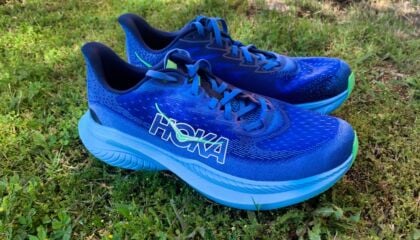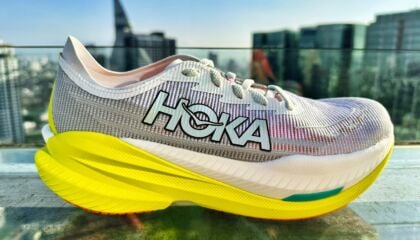
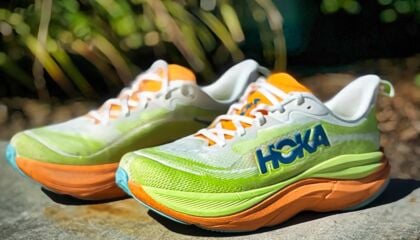
 Started in 2009 as a trail shoe designed for faster downhill running - Hoka created a model with an oversized outsole that had more cushion than other running shoes at the time.
Started in 2009 as a trail shoe designed for faster downhill running - Hoka created a model with an oversized outsole that had more cushion than other running shoes at the time.





We’ve put together this comprehensive guide to help you understand what makes Hoka shoes unique. From their distinctive cushioning systems to their innovative stability features, these proprietary technologies are what give Hoka running shoes their game-changing ride quality and performance characteristics.
PROFLY
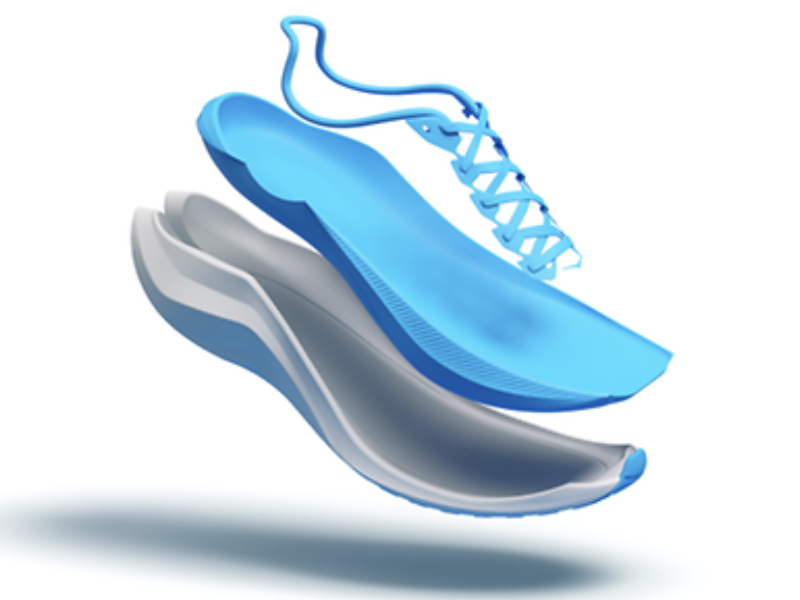 |
A dual-density midsole system that combines a softer top layer for cushioning with a firmer bottom layer for propulsion. Often described as “intelligent suspension,” PROFLY provides a unique soft and marshmallow-like landing at the heel while delivering dynamic push-off at the forefoot. This versatile design makes it ideal for both daily training and performance runs, offering an excellent balance of comfort and responsiveness. |
PROFLY-X
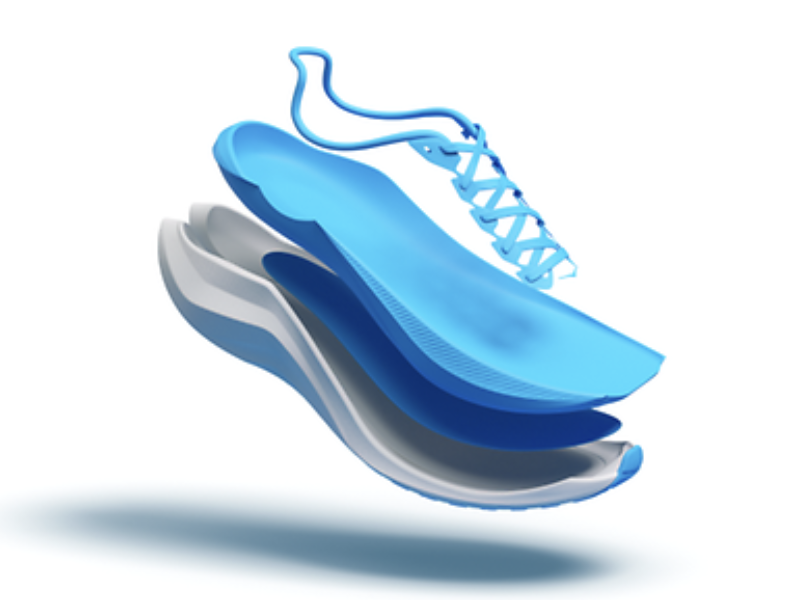 |
An advanced iteration of PROFLY, this high-performance midsole incorporates highly resilient PEBA foam for enhanced energy return and lightweight performance. The PROFLY-X system is typically paired with a carbon fiber plate that curves under the toes, creating a propulsive springboard effect. Found in Hoka’s racing models like the Carbon X and Cielo X1, this technology delivers a trampoline-like, bouncy sensation that’s ideal for speed workouts and race day efforts. |
CMEVA (Compression Molded EVA)
|
Hoka’s standard midsole material, Compression Molded EVA (CMEVA) offers excellent durability and cushioning. This reliable foam is found in many of Hoka’s popular models like the Clifton and Bondi series, providing the foundation for their characteristic plush yet responsive ride. CMEVA strikes a perfect balance between weight, cushioning, and longevity, making it ideal for everyday training shoes. |
J-Frame
 |
Designed specifically to combat overpronation, J-Frame technology utilizes a firmer density foam that runs along the medial (inner) side of the shoe and curves around the heel in a J-shape. This innovative approach provides targeted support without the rigid, intrusive feel of traditional medial posts. Featured in models like the Arahi, J-Frame helps guide the foot through a more neutral motion path while maintaining the cushioned comfort Hoka is known for. |
H-Frame
 |
Introduced in models like the Gaviota 5 and Stinson 7, the H-Frame represents Hoka’s evolution in stability technology. This system features a firmer foam that interlocks with the midsole in an H-shaped (or figure-8) pattern that runs along both the medial and lateral sides of the shoe. Unlike the J-Frame, which primarily supports the medial side, the H-Frame creates balanced, inherent stability on both sides of the foot, allowing for the use of softer cushioning while maintaining excellent support for moderate overpronators. |
SwallowTail Heel
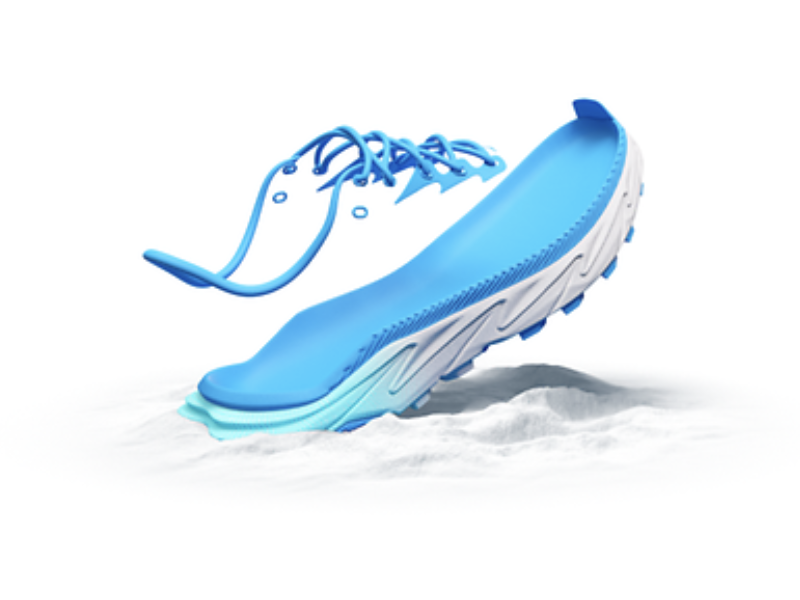 |
The SwallowTail heel is one of Hoka’s most visually distinctive technologies, featuring a forked, split geometry at the rear of the shoe. This unique design creates a broader landing surface and improved impact distribution during heel strikes. Seen in models like the Kawana, the SwallowTail works in harmony with the Meta-Rocker to provide smoother landings and transitions throughout the gait cycle, making it especially beneficial for heel strikers seeking additional stability and impact reduction. |
Meta-Rocker
|
Meta-Rocker is perhaps Hoka’s signature technology, featuring a curved, rocking-chair-like sole geometry that helps roll the foot through its natural gait cycle. This design reduces the height differential between heel and toe, creating a smoother transition and more efficient stride. Hoka offers two variations: Early Stage Meta-Rocker (positioned at the midfoot) for speed-oriented models, and Late Stage Meta-Rocker (closer to the toes) for daily trainers. This technology is what gives Hoka shoes their distinctive rolling sensation, reducing foot fatigue during longer runs. |
Any runner inn need of a highly cushioned yet stable daily trainer that excels at both long and short distance runs capable of faster efforts.
Runners with higher volume feet or those seeking an ultra plush running experience.
If you’re looking for a stable, highly cushioned trainer for slow running, the Bondi 9 is the shoe for you.
If you’re looking for a firm-riding trainer that can double up as a walking or standing shoe, the Bondi 9 is a great choice.
If you have very wide feet, the narrow upper of the Bondi 9 will be too uncomfortable for you.
If you want a very soft, plush max-cushioned trainer, the Bondi 9 is not for you.
If you were looking for a versatile shoe that can handle the workload this is a valuable option. It also has the durability to handle the milage with its new midsole foam.
If you are expecting the ride to be the same as the HOKA Mach 5; soft and bouncy. Well, unfortunately it is not. The Mach 6 uses a new type of midsole foam that is not plushy nor bouncy, but more balanced and responsive.
If you’re looking for a soft, energetic trainer for long runs or uptempo runs, the Mach X 2 is a great option.
If you like the Hoka Rocket X 2 and you want a similar ride but with a more flexible forefoot, it’s also a good option.
If you have sensitive Achilles which easily get irritated, the Mach X 2 is not for you.
If you like a firm-riding speed trainer with a lot of ground feel, the Mach X 2 is also not for you.
Gaviota’s updated midsole supports runners who supinate (run on the outside of the foot) as well as overpronate (roll excessively in) and is especially suited for long and recovery runs; it is also a great shoe for walkers and those on their feet all day who need supportive shoes.
Though Gaviota is lighter than in the past, it is not best for speed-focused runs or runners who prefer a light, quick feel underfoot. The midsole support is helpful for non-neutral runners, this outsole is not the most durable option for those with heavy wear patterns.
For a road-to-trail runner or non-technical trail runner or hiker looking for a stable, maximalist shoe to go the distance in comfort.
Trail runners who primarily run on technical, uneven terrain with tight rocks where a lot of agility is required or speed is the focus.
As written: "ho-ka". The brand removed "one one" from the name a few years ago.

